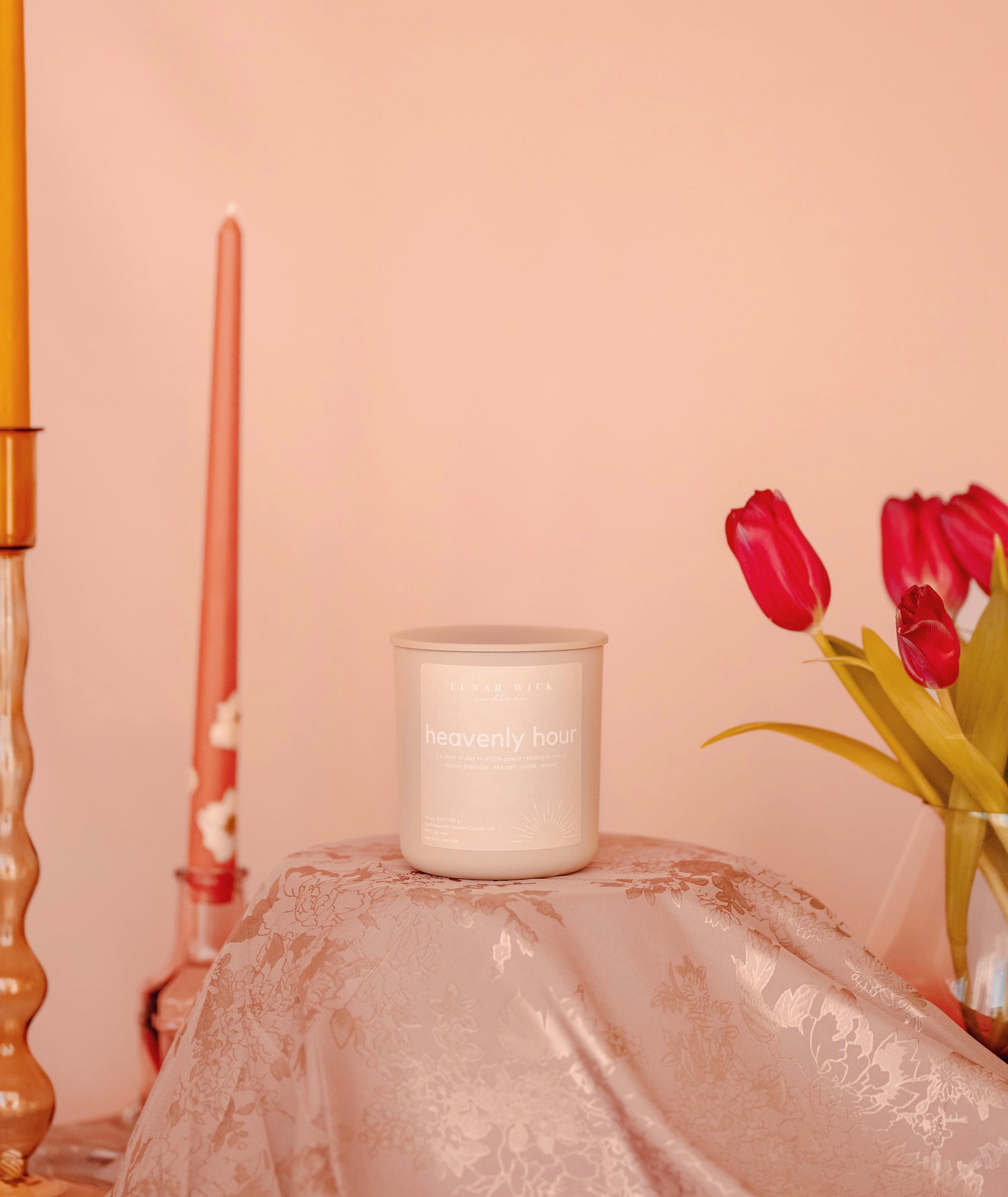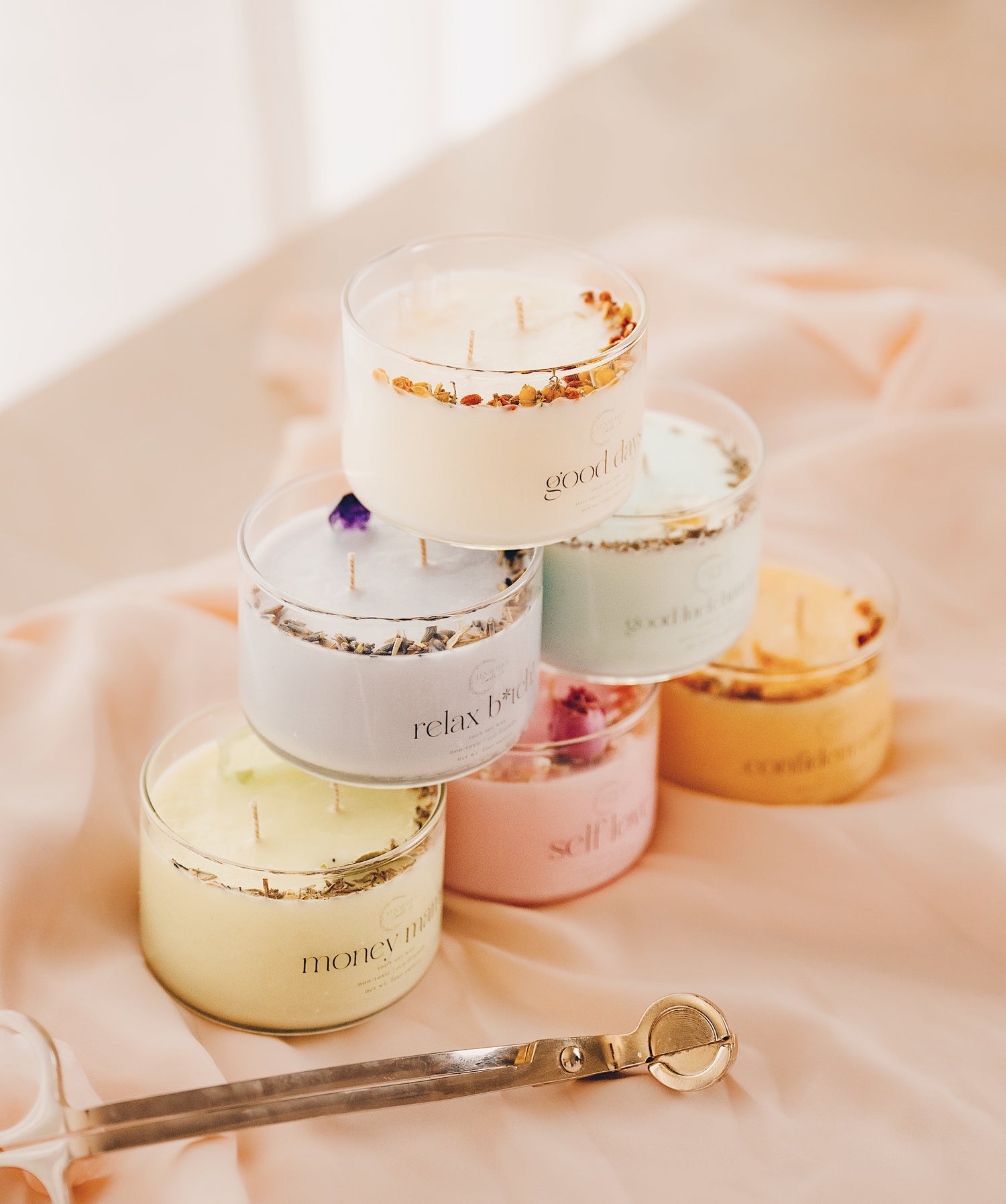There was a time in my life where I would be strolling down the aisles of Target or TJMaxx and got caught up in the allure of a twenty-ounce fall scented candle for only $12.99. We’ve all been there. I’d load my cart up with all of these mass-produced candles and wouldn’t think twice about it. Little did I know they are actually slow-killers containing harmful chemicals and ingredients that can cause cancer and loads of other health complications down the road. Here’s what I’ve learned that the big corporations don’t want you to know about their candles and fragranced products.

Almost all of the candles you see in the candle aisle at big box stores are made from Paraffin wax. Well, what exactly is Paraffin wax and how is it different from Soy wax? Paraffin wax, also known as Petroleum wax, derives from petroleum, coal, or oil shale. It is one of the cheapest waxes on the market, requiring little production costs, which is why most big box companies use this wax to produce their candles. This wax is claimed to be harmful due to the toxic fumes it releases when burned. According to a study published in 2013 by European Chemical Society, the burning of scented candles in an indoor environment can release a large amount of toxic chemicals, due to the raw paraffinic material used. As a candle brand, you are not obliged to disclose the ingredients used. That is why many don't disclose the ingredients, although most people don’t know the harmful impacts of Paraffin wax to begin with. They even try to trick us with terms like “Mineral wax” or even “Soy Blend Wax” which could contain 0.05% Soy wax or less and primarily consist of Paraffin wax. On the other hand, Soy wax is a vegetable wax made from the oil of soybeans. After harvesting, the beans are cleaned, cracked, de-hulled, and rolled into flakes. The oil is then extracted from the flakes and hydrogenated. The hydrogenation process converts some of the fatty acids in the oil from unsaturated to saturated. This process dramatically alters the melting point of the oil, making it solid at room temperature. We are adamant about using only 100% natural Soy wax and you never have to worry about harmful chemicals emitting into your home when burning one of our candles.
Now, here’s where we get into the nitty-gritty about all parabens, phthalates, sulfates, and carcinogens which are commonly used in fragrances. Parabens are preservatives that are present in lots of things from makeup to food. Phthalates are used in nail polishes, hair sprays and other products including cleaning product fragrances. Not only are they known to cause birth defects and fertility problems, but they also mimic hormones and disrupt their natural process which raises concerns about increased cancer risk, similar to parabens. Most big box store companies that mass-produce candles will use cheap, chemical fragrances that are loaded with parabens, phthalates, and known carcinogens. Conventional candles can release toxic chemicals including formaldehyde, which is a known carcinogen, acetaldehyde, which is a probable human carcinogen, and polycyclic aromatic hydrocarbons (PAH’s), some of which are known or suspected human carcinogens.
So, how do we make sure the products we bring into our homes won’t harm us? Well, most small businesses pride themselves on using only high quality, non-toxic ingredients, like us! The fragrance oils we use are free from carcinogens, toxins, and other hazardous chemicals commonly found in other fragrance oils. Our candles can bring you peace of mind, knowing that we are using the safest supplies available. Our suppliers always adhere to the strict RIFM (Research Institute for Fragrance Materials) standard regarding fragrance safety. This is why we use essential oil infused fragrance oils. Essential oils are pure liquids containing aroma compounds that are removed from the seeds, flowers, leaves, roots, and stems or bark of plants through methods such as distillation, expression or extraction. These oils carry the distinctive essence, or scent, of the plant it was made from and are frequently used in perfumes, flavorings and medicines. Now, you may be asking, why don’t you use 100% pure essential oils and why are they just infused into fragrance oils? We are all about keeping as small of a carbon footprint as possible, and while we would love to use only essential oils, it is not eco-friendly. Due to the large amount of plants it takes to produce even an ounce of its essential oil, we go for a more eco-friendly route that is still safe for you and your home.

We want the community to experience the joy of burning one of our candles and feeling confident knowing that we use only the safest, highest quality ingredients. As a small business owner and candle maker, I can tell you that most small businesses actually care about you and your health with their ingredients, so skip the big box stores and shop small!
Some small businesses I recommend for household items include:
Household Care:
Body Care:
Gifts:
CBD Products:
Soaps:
Skincare:
Sources:
Derudi, M., Gelosa, S., Sliepcevich, A. et al. Emission of air pollutants from burning candles with different composition in indoor environments. Environ Sci Pollut Res 21, 4320–4330 (2014). https://doi.org/10.1007/s11356-013-2394-2
EPA: Acetaldehyde
https://www.epa.gov/sites/production/files/2016-09/documents/acetaldehyde.pdf
Derudi, Marco & Gelosa, Simone & Sliepcevich, Andrea & Cattaneo, Andrea & Cavallo, Domenico & Rota, Renato & Nano, Giuseppe. (2013). Emission of air pollutants from burning candles with different composition in indoor environments. Environmental science and pollution research international. 21. 10.1007/s11356-013-2394-2.
Research Institute for Fragrance Materials:



0 comments